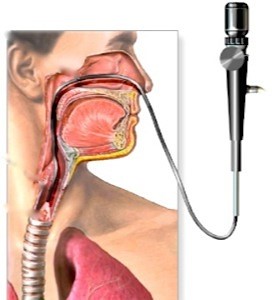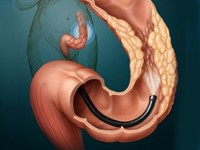Useful information for patients
This page contains useful information about endoscopic examinations, including descriptions of different types of procedures. In the examination preparation section, you will find recommendations that will help you prepare for the procedure. There is also a list of doctors who can perform endoscopic examinations.
Types of endoscopic examinations
- Bronchoscopy is a medical procedure in which a visual examination of the bronchial tubes and pulmonary tract is performed using an endoscope.
- Esophagogastroduodenoscopy is an endoscopic procedure for examining the esophagus, stomach and duodenum.
- Colonoscopy is a medical procedure in which a visual examination of the colon and rectum is performed using an endoscope.
- Nasopharyngoscopy is a medical procedure in which a visual examination of the nasopharynx and pharynx is performed using an endoscope.
- Rectoromanoscopy is a procedure in which a doctor checks the mucous membrane of the rectum and the lower part of the colon.
- Cholangioscopy is a medical procedure in which a visual examination of the bile ducts and gallbladder is performed using an endoscope.
Preparation for the examination
Preparation for endoscopic procedures includes several stages. Usually, before the procedure, the patient is provided with instructions regarding diet and medication. In order to ensure the purity of the intestine, the patient can undergo a cleansing enema or take medications that help to free the intestines from the contents.
In the case of endoscopic procedures related to the upper gastrointestinal tract (for example, gastroscopy), it is necessary to observe an 8-12 hour night fast. It may also be necessary to stop taking certain medications a few days before the procedure.
Before the procedure, the patient may be asked to remove contact lenses, remove dentures and jewelry. On the day of the procedure, the patient is not recommended to eat food and liquids, as well as smoke.
Preparation for endoscopic procedures may vary slightly depending on the type of procedure and the individual characteristics of the patient. Therefore, it is recommended to discuss all the details of preparation with the doctor who performs the procedure.

Bronchoscopy is a modern diagnostic examination of the mucous membranes of the trachea and bronchi using a special optical device – a bronchoscope. This is the only method that allows you to directly assess the inner surface of the bronchi, study their configuration, the relief of the mucous membrane and its vascular pattern, and if a pathologically altered portion of the mucosa is detected, perform a biopsy for subsequent morphological analysis. Bronchoscopy is also the most important and effective way to treat patients with chronic inflammatory and purulent lung diseases.
Preparation for the study
The study is carried out strictly on an empty stomach, food intake for 8-10 hours and liquids for 4-6 hours before the procedure is completely excluded. In the evening before the study (until 18:00) — a light dinner. On the day of the study, you should refrain from smoking.
Cancel oral anticoagulants (blood thinners) on the eve of the study, pause the injection of heparin 4-6 hours before the procedure.For examination, you must have an outpatient card, chest CT results or a description of a lung X-ray, a towel (since short hemoptysis is possible after the procedure). If you suffer from bronchial asthma, then do not forget the inhaler.During the preliminary conversation, inform your doctor about allergies to medications (especially if you are allergic to painkillers) and your existing chronic diseases (bronchial asthma, heart failure).
Additional diagnostic and therapeutic manipulations during bronchoscopy:
- Mucosal biopsy/neoplasms
- Flushing from the walls of the bronchi
- Bronchoalveolar lavage
- Rehabilitation of the tracheobronchial tree
What complications can there be?
As a rule, this study is well tolerated by patients, but sometimes there is loss or hoarseness of voice, sore throat, and in the case of a biopsy, hemoptysis may occur. These phenomena are temporary. You should be alerted by prolonged hemoptysis, intense unrelenting chest pain, the appearance of swelling on the face and around the neck, nausea and vomiting, as well as an increase in body temperature and chills. If these symptoms appear, consult a doctor immediately.

Gastroscopy (EGDS, FGDS, FGS, esophagogastroduodenoscopy) — this is an endoscopic examination of the upper gastrointestinal tract using an endoscope, which is performed by an endoscopist. During gastroscopy, the doctor examines the esophagus, stomach and 12 duodenum (the initial part of the small intestine) from the inside.
Gastroscopy (advantages of the method)
Gastroscopy is the "gold" standard (the best method) for the diagnosis of inflammatory, erosive, ulcerative, precancerous and tumor diseases of the esophagus, stomach and 12 duodenum.
Any other methods of diagnosis of these organs do not have such information and accuracy.
A modern endoscope is a sophisticated high–tech device that allows a qualified endoscopist to see the image with optical magnification and examine everything in great detail. After all, any changes in color and surface, even a few millimeters in size, are very important for detecting not only the disease itself, but also its first signs.
During gastroscopy, a biopsy is performed followed by histology, if necessary, to examine the cells under a microscope and make a diagnosis at the cellular level, additionally analyze for the bacterium Helicobacter pylori (text Helicobacter), which is not only the cause of erosive and ulcerative lesions of the stomach and gastritis, but also with long-term presence in the stomach can lead to more serious consequences.
Gastroscopy is performed strictly on an empty stomach!
If you take important medications daily (for lowering blood pressure, heart medications, etc.), you need to take them. Take with you all medical documents (referral, data)

It is well known that such a complex procedure as colonoscopy is necessary for the diagnosis of pathologies of the colon and rectum. The procedure consists in inserting a probe (colonoscope) into the anus. The probe is attached to a flexible tube and contains a tiny video camera that allows the doctor to examine the surface of the mucous membrane throughout the large intestine. The length of the device is up to 1.45 m, which allows an examination of the blind, sigmoid, colon and rectum. Colonoscopy does not affect the small intestine. If necessary, during colonoscopy, it is also possible to remove polyps or other types of neoplasms or take tissue samples for analysis (biopsy).
Why do I need a colonoscopy of the intestine?
The patient is shown a colonoscopy for chronic abdominal pain, bleeding from the anus, chronic constipation, diarrhea and other intestinal problems.You can also undergo a colonoscopy for the presence of bowel cancer. If the patient is over 50 years old, and there have been no cases of colon cancer in his family, the doctor may recommend that he undergo an examination of the abdominal cavity with a colonoscope every 7-10 years. If the patient is prone to the formation of polyps on the walls of the large intestine, colonoscopy should be performed at regular intervals in order to find and remove the polyps that have arisen during the examination of the walls. This manipulation is carried out to reduce the risk of rectal cancer.
Preparation for colonoscopy
Colonoscopy is a low–traumatic type of medical procedure, most people experience it under the influence of anesthesia. The study itself takes no more than an hour, and recovery after – a couple of hours. Preparation for the study is the most difficult for patients. It is a little comforting that if the procedure is successful and no pathologies are detected, then the next one may not be required for 7-10 years.
It is known that colonoscopy requires preliminary cleaning so that the intestines remain free and as clean as possible – otherwise, food residues and stools can make it difficult to see a doctor. Usually, when a doctor prescribes a diagnostic procedure, he tells the patient how to prepare for it, what to eat, what medications to use and what body reactions should be expected during preparation. The method of preparation for colonoscopy is selected individually for each patient.
Video
Our doctors-endoscopists
Our list of endoscopists is a team of professionals who have a high level of knowledge and skills in the field of endoscopy. We guarantee the high quality of medical services and the safety of procedures. Our doctors have extensive experience in conducting a wide range of endoscopic examinations and procedures, including colonoscopy, gastroscopy, esophagogastroduodenoscopy and others.
